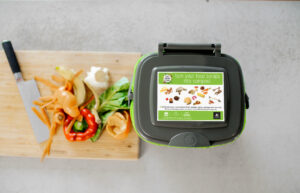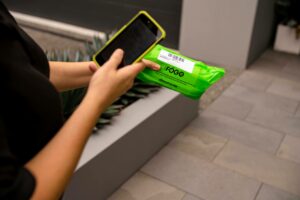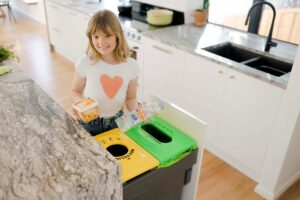
November 02, 2021
Three Tips for Implementing a community FOGO Program
FOGO has now been a fixture of many communities for years, so what are the three key learnings for those still implementing a program?
Food Organics, Garden Organics (FO+GO) Programs continue to expand in Australia with both the environmental and financial benefits now well understood. However, as anyone with experience implementing FOGO knows, behavioural change can be challenging, so let’s start with the good news!
A recent study by the NSW EPA confirmed what those in the industry already know, the performance of food diversion can be partially explained by the length of time the FOGO program has been in place – programs longer in place generally perform better.
The team at Source Separation Systems have experienced this first-hand. They have spent almost 15 years involved in FOGO programs all over Australia and have distributed over 50 million FOGO liners in the last twelve months alone, most of which are part of ongoing annual distributions. As Managing Director Peter Cruwys highlights:
Communities really do embrace FOGO once they understand the program, and work though the ‘perceived’ challenges, however there are certainly a few strategies successful councils, Collection contractors and Organic Processers utilise to fast-track this process.
1. Education is key, particularly at the point of diversion.
Education is key to a successful FOGO implementation, however, particularly during COVID-19, the ability to talk directly to communities has been limited. Peter highlights that consistent simple messaging across multiple channels is most effective, particularly when this can be reinforced in the household through the use of in-mould label technology on the Kitchen Caddies being used. This technology allows educational information, in a full colour format to be moulded into the lid during production. As a result, households are presented with educational information at the point at which they divert their food waste. It’s the most powerful moment to be able to educate about correct diversion and contamination risks, and by utilising pictures it also ensures information can cross cultural and language barriers.
Reinforcing the program with customised educational messages on both individual liners and the liners packaging, as occurs on Compost-A-Pak® FOGO Bags, also assists to ensure people understand the value and importance of using only Australian Certified Compostables liners.
During the implementation phases, having knowledgeable support available for questions, including on social media, also assists, as does a big inspection program which highlights great diversion and educates those households with contamination.
2. Make it convenient, particularly as habits are being formed.
Convenience is also really important, particularly during the first year as communities get into the ‘habit’ of food diversion. Peter asserts, whether choosing a Vented or Solid Kitchen Caddy, providing Australian Certified Compostable liners in the implementation phase improves convenience and so improves both adoption and contamination rates. In fact, some of the programs Peter has been involved in have reported contamination rates as low as 1.2% within the first twelve months.
Once the program is embedded, and embraced by the community, Peter works with many councils to shift from a full distribution model. Source Separation Systems manage a diverse range of alternative opt-in models which provide councils the flexibility to either target liners to those with requirements only or even part subsidise their distribution.
3. Reduce cycles and if possible, downside Landfill.
Peter also recommends that whilst initially unpopular with some residents, shifting to a fortnightly smaller Landfill bin drives better results. It’s a powerful symbolic change which drives compliance, and when implemented alongside the provision of a new household Kitchen Caddy and Compost-A-Pak Liners, it’s one most households understand. This strategy was also recognised by the NSW EPA’s 2020 report which concluded, “In General, councils providing a fortnightly residual waste collection achieved higher food waste diversions compared to those on a weekly service. In addition, councils providing smaller residual waste bins achieved higher food waste diversion efficiencies.”
It should be acknowledged that there are certain instances in which a more regular Landfill bin may be required by a resident, such as during those crazy few years when families are in the nappy phase, if choosing disposable options. In this case however, many councils have shifted to a user pays option, which allows households to make a choice on options. Often, once households understand the FOGO Program, they are surprised by just how little residual waste there is.
As Peter concludes, “Being lucky enough to live in beautiful Lake Macquarie, where our progressive council embraced FOGO four years ago, by making a regular trip to recycle our soft plastics, our families’ Landfill bin is lucky to be filled once a year!”


